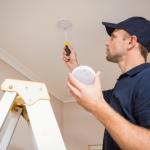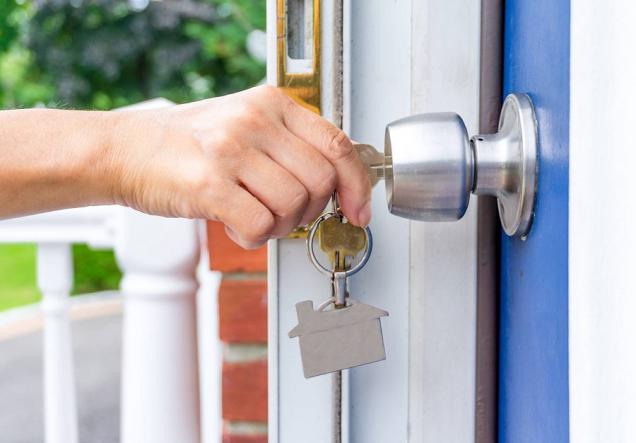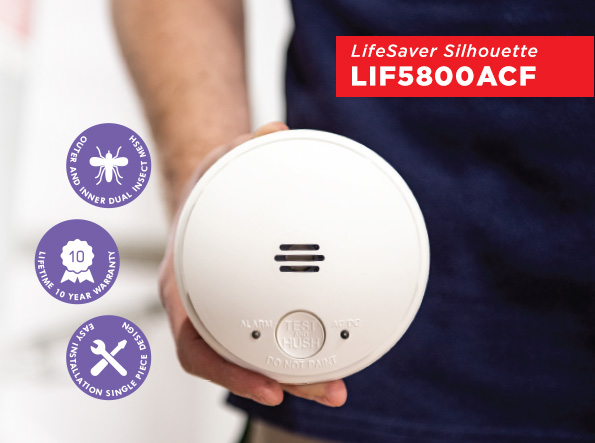
Things to look out for when purchasing smoke alarms
By Home Safety Store|January 30, 2019
Smoke alarms are an essential part of any property; they help save lives and protect your home. Smoke alarms are devices which have a means of detecting fire, and a warning system, usually in the form of a loud alarm. They are able to detect fires early and give you and your family the precious minutes you need to escape in an emergency. Studies show that you are twice as likely to die in a house fire where there is no alarm than one where there is. If you’ve not installed your smoke alarm yet, here are key things you need to look out for.
Types of Smoke Alarm
There are four main types of smoke alarm available, each with a different method of sensing a fire along with their different pros and cons.
· Optical – Sometimes called photoelectric smoke alarms, these are effective at detecting large smoke particles, which result from slow burning fires, such as upholstery and electrical wiring fires. They are slightly slower at detecting fast-burning fires and can be placed near kitchens as they aren’t overly sensitive.
· Ionisation – The cheapest type of alarm; ionisation alarms are sensitive to small smoke particles from fast-burning fires made of materials like wood and paper. These will warn you of the fire before the smoke gets too thick. Because they are highly sensitive, you will need to consider the right placements in your home.
· Heat alarms – These detect a rise in temperature of the room, usually about 60 degrees, and are the best alarms for placement are in kitchens, as they don’t detect smoke.
· Combination – The final kind of alarm combine different methods of detection, usually optical and heat or smoke and carbon monoxide. Smoke and heat alarms are good for reducing false alarms and speeding up detection. Smoke and carbon monoxide detectors can reduce the cost of needing multiple different detectors and take up less of your living space.
Which Alarm Should I Use Where?
For the best detection and safety with minimal false alarms, you should follow the list below:
· Kitchen and garage – Heat alarms
· Landings – Ionisation or combined optical and heat alarms
· Bedrooms, living rooms and halls – Optical or combined optical and heat alarms
Other Features to Consider
· Battery – Some alarms come with a non-removable 10-year battery, which means you don’t need to remember to replace the battery every year.
· Testing – This enables you to check if the alarm is still operational. Some methods include shining a torch on the alarm, pressing a button or using a remote, which has the benefit of not needing you to stand on a ladder to press the button.
· Hush button – This feature enables you to silence the alarm for a few minutes; a handy feature when a false alarm occurs. An example is if you burn your toast, and need some peace and quiet while the smoke clears.
· Expiry date – All smoke alarms have a maximum lifespan of 10 years, after which they become ineffective due to the build up of dust and corrosion. A clearly visible date can help you remember when it needs replacing.
· Legislation – Abide by the rules and legislation of your local area. For example, in West Australia, you must have a mains powered smoke alarm in a house that is to be rented or sold. They must also be replaced every 10 years.
Remember to take these features into consideration when purchasing a smoke alarm for your home. For expert advice on the right home safety systems for your needs, contact our team at Home Safety Store today.
Types of Smoke Alarm
There are four main types of smoke alarm available, each with a different method of sensing a fire along with their different pros and cons.
· Optical – Sometimes called photoelectric smoke alarms, these are effective at detecting large smoke particles, which result from slow burning fires, such as upholstery and electrical wiring fires. They are slightly slower at detecting fast-burning fires and can be placed near kitchens as they aren’t overly sensitive.
· Ionisation – The cheapest type of alarm; ionisation alarms are sensitive to small smoke particles from fast-burning fires made of materials like wood and paper. These will warn you of the fire before the smoke gets too thick. Because they are highly sensitive, you will need to consider the right placements in your home.
· Heat alarms – These detect a rise in temperature of the room, usually about 60 degrees, and are the best alarms for placement are in kitchens, as they don’t detect smoke.
· Combination – The final kind of alarm combine different methods of detection, usually optical and heat or smoke and carbon monoxide. Smoke and heat alarms are good for reducing false alarms and speeding up detection. Smoke and carbon monoxide detectors can reduce the cost of needing multiple different detectors and take up less of your living space.
Which Alarm Should I Use Where?
For the best detection and safety with minimal false alarms, you should follow the list below:
· Kitchen and garage – Heat alarms
· Landings – Ionisation or combined optical and heat alarms
· Bedrooms, living rooms and halls – Optical or combined optical and heat alarms
Other Features to Consider
· Battery – Some alarms come with a non-removable 10-year battery, which means you don’t need to remember to replace the battery every year.
· Testing – This enables you to check if the alarm is still operational. Some methods include shining a torch on the alarm, pressing a button or using a remote, which has the benefit of not needing you to stand on a ladder to press the button.
· Hush button – This feature enables you to silence the alarm for a few minutes; a handy feature when a false alarm occurs. An example is if you burn your toast, and need some peace and quiet while the smoke clears.
· Expiry date – All smoke alarms have a maximum lifespan of 10 years, after which they become ineffective due to the build up of dust and corrosion. A clearly visible date can help you remember when it needs replacing.
· Legislation – Abide by the rules and legislation of your local area. For example, in West Australia, you must have a mains powered smoke alarm in a house that is to be rented or sold. They must also be replaced every 10 years.
Remember to take these features into consideration when purchasing a smoke alarm for your home. For expert advice on the right home safety systems for your needs, contact our team at Home Safety Store today.



